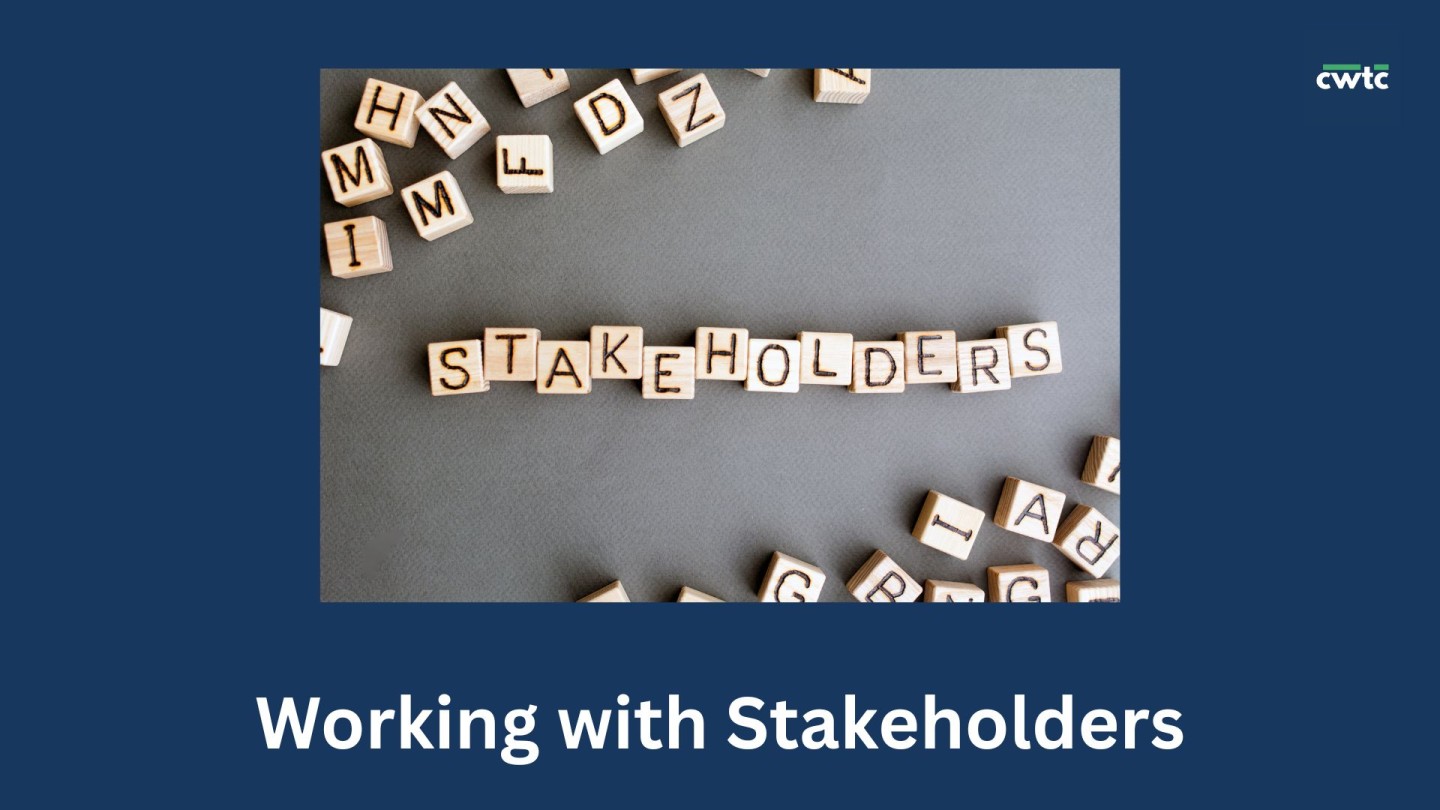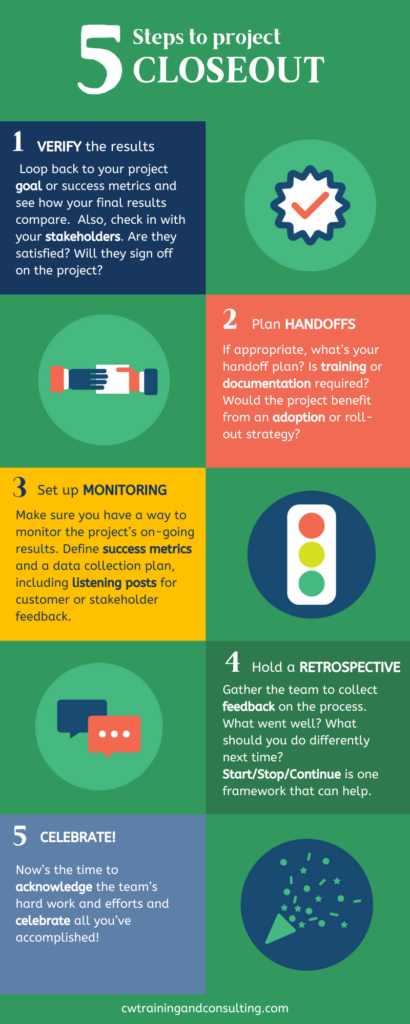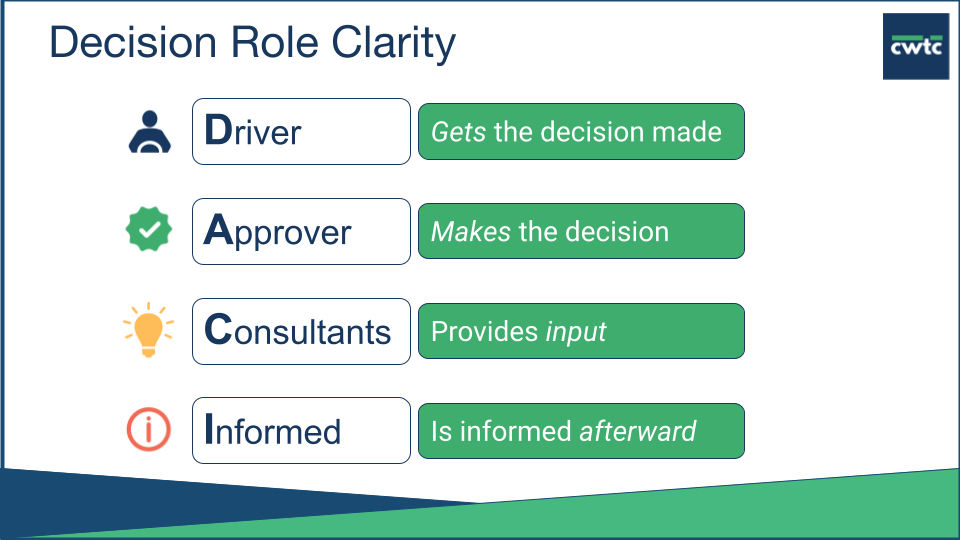The Stakeholder Engagement Pyramid, Power Grid, and Communication Plan are the three tools we live by as we navigate the management of our project stakeholders.


The Stakeholder Engagement Pyramid, Power Grid, and Communication Plan are the three tools we live by as we navigate the management of our project stakeholders.


One of the biggest frustrations I’ve experienced as a program manager is seeing my project get canceled. It’s painful to have put thought, time and energy into what I believed was an important initiative for the company, only to have it be deprioritized, defunded, and scrapped. Has this ever happened to you? And how can you protect your projects from project cancellation?
Some reasons for project cancellation are out of your control. Maybe the business environment has changed, or a competitor has moved into your domain. Perhaps the project was counting on a technical breakthrough that didn’t pan out or an external partner that couldn’t follow through.
On the other hand, some of the power is in your hands. Are you running the project effectively? For example, are the goals and vision of the project clear? Do you publish and meet most of your milestones? Listen effectively to your project team and keep your stakeholders up to date with progress and challenges? Manage risks, scope creep and budget constraints?
If you’ve got a good handle on the project execution, there still may be a risk of project cancellation. This can happen if the project is not aligned well with the overall priorities of the organization or if it’s competing with other projects that are more critical to business success. To determine the risk from this internal misalignment, ask yourself these three questions.
If there’s a list of prioritized projects, does your project appear on it, or contribute meaningfully to one that does? If you don’t have a clear idea of the strategic priorities of your organization, it’s absolutely worth your time to track it down. It may require a conversation with your manager, or the product or marketing manager in your domain. Understanding how your project contributes, and showing that tie to strategic objectives at every project review and conversation you have with stakeholders, will go a long way toward keeping your project prioritized and funded.
I once worked on a project that had a strong strategic tie to the company’s objectives of saving money in server hosting. However, no matter what I did, I couldn’t get the manager of a critical team to provide the people resources I needed to execute the project. The project soon fell apart, because no matter how strategic the work was, it could not succeed without the properly skilled people working on it. Without buy-in from the people who control your resources, your project is at risk. Get that buy-in, or raise the issue with your sponsor promptly. (You can read more about this project failure and what I learned from it in this blog article.)
Declining stakeholder support is a key risk factor. Your project sponsor may still be on board with your project, but everyone else may have started to doubt the business case, or the technical foundations, or just have moved on to the next business challenge. Keep your stakeholders informed, showcase successes, highlight that strong strategic alignment, and if you notice waning interest, ask about it. Enlist your sponsor in helping uncover the reasons for the declining support. It’s better to cancel the project quickly if the project is doomed than let it drag on wasting your team members’ time, energy and enthusiasm.
Project cancellations happen. Sometimes it’s the right thing, even if it’s painful. Ask yourself these three questions regarding your projects and you’ll have a better sense of the risk of cancellation. You can either shore things up or move decisively to cancel it.
If you enjoyed these tips, sign up for our newsletter and don’t miss a future post or learning event announcement.
CW Training and Consulting specializes in hands-on, interactive project management workshops - either off the shelf or customized to your needs. Contact Us and we will help you find the right learning solution for you and your business.
I’ve worked at Fortune 500 companies that took months to plan their next year, debating over how to prioritize multiple projects. Did those plans stick? Of course not. We would start the year in a perfect symphony of tactics aligned to strategy from the CEO’s office down to the front line managers. As time passed, recommendations of “Tiger Teams,” market shifts and project learning would result in justifiable shifts in project priorities.
I’ve also worked at startups where it felt like strategy shifted weekly, impacting project priorities along with the strategy changes. Maybe a large customer comes in with product demands or a strategy fails to bring in revenue. Pivoting is good but the cascading effect on marketing, operations and finance sends those teams into a stress ball of spin.
So where’s the middle ground for front line teams executing a shifting strategy that impacts how you prioritize multiple projects? How do you start out 2025 with a clear yet flexible plan for your projects? I do it by putting my program management skills to work.
It’s common practice for Program Managers to prioritize projects with a running list of projects or initiatives for their client teams. This is useful for resource allocation and as an input to on-going assessment of projects against goals. Jenny and I carry this practice over to our partnership and any gigs we lead as program managers.
I use this Project Prioritization Template as a starting point for stack ranking projects. It's meant to be strategic, creating a framework to help decide which projects to resource and whether you’re working on the “right” stuff. The key is to relate your projects to your strategic priorities. If a project isn’t aligned to your priorities, drop it from your list.
Here’s an example of a project priorities list you might have for a marketing team:
Your Project Priorities List should be a living document! Of course, priorities to shift as the organization learns so I create operating mechanisms to prioritize projects on a regular basis. These aren’t in depth project reviews, but Priority Reviews. You'll want to make sure the right people participate in the review - those who can add value and can help decide whether to add, subtract, or re-prioritize projects.
Time your Priority Reviews based on the time horizon of the projects and organization culture. Marketing teams may meet more frequently as they learn from customers and the market. Product teams may meet less frequently. Make sure the review is useful!
You’ll be well-positioned to start 2025 strong and achieve your goals by creating a prioritization framework that helps your prioritize multiple projects. Use it to maintain, review and adjust throughout the year. The key is to be intentional, flexible, and open to learning and adapting along the way.
Find this and other free templates in the at cwtrainingandconsulting.com and if you enjoyed these tips, sign up for our newsletter and don’t miss a future post or learning event announcement.
CW Training and Consulting specializes in hands-on, interactive project management workshops - either off the shelf or customized to your needs. Contact Us and we will help you find the right learning solution for you and your business.
We love to apply project management concepts to everyday life. As we often say, “Life’s a Project!”. As we launch a new year, you might take a moment to do a "project closeout" on 2024, whether you’ve got a specific project in mind, or just general work effort, or even your personal life. How was the year? Did you accomplish what you set out to do? What did you learn along the way?
We like to borrow from the Project Closeout phase of project management for help in thinking through these questions. Maybe it can be helpful to you too!

Find this and other free resources at cwtrainingandconsulting.com and if you enjoyed these tips, sign up for our newsletter so you don’t miss a future post or learning event announcement.
CW Training and Consulting specializes in hands-on, interactive project management skills boosting workshops - either off the shelf or customized to your needs. Contact Us and we will help you find the right learning solution for you and your business.


Meetings are an inescapable part of modern working life, and leading effective meetings is a powerful leadership skill. Clients tell us one of the biggest meeting difficulties they have is keeping control of discussions amid challenging behaviors.
Here are some statements from some clients who shared what they want to learn to make their meetings more effective:
Do those ring a bell? Learn to disarm difficult meeting behaviors using our three-step process that will elevate your meetings from chaotic to collaborative.

Working for years with dynamic, growing organizations, we’ve identified five archetypes that represent some of the most common difficult meeting behaviors. In fact, we get nods of recognition and sheepish raised hands when we ask who sees these archetypes in themselves.
Here are the first three archetypes. Do you recognize yourself in them? Could a change in behavior make for more effective meetings?
👉 Do you tend to hold back in meetings even when you have information or an opinion that can help? We call that archetype The Watcher.
👉 Personally, I tend to repeat or restate what others say, imagining I’m lending support or helping others to better understand. Being The Repeater might be helpful sometimes, but it can quickly get annoying.
👉 How about those who share their opinion insistently, forgetting to listen to other voices? That’s The Know-It-All.
When we see our own opportunities for improvement, we can work improving and even find compassion for others' behavior.

Most of the survey statements above reflect a desire for high-quality facilitation skills and tools. We have facilitation guidelines that target the five archetypes.
For example, how do you regain control of the room with folks who interrupt and digress? We call this fourth archetype The Off-Tracker because they have trouble staying on topic and may dominate the conversation. We’ve got a three-part solution that works with anyone who tends to interrupt or dominate the discussion:

Flip the script to elevate your meetings into high-performing collaborations. By consciously focusing on the constructive attributes of each archetype, you create opportunities for all your participants to shine.
For example, let’s take a look at The Naysayer, our final archetype. This archetype looks for the downside in an opportunity, the flaws in an argument, and the worst case in a situation. They may never show enthusiasm for an idea or offer constructive suggestions for improvement. What might be the strengths and talents of this behavior?
Consider rebranding The Naysayer as The Questioner—the one who excels at asking questions that no one else considers. Harnessing their ability to find flaws, poke holes in ideas, and identify risks and downsides can make your solutions better. They just want to make sure someone has heard and considered their concerns. They often don’t need to know how their concerns are being addressed. You might ask them to quantify a risk so you understand its likelihood - or ask for possible solutions if the risk warrants it. When asked, they can have creative and effective solutions to the issues they raise.
There you have it—a bit of our secret sauce to turn those unruly meetings into collaborative win-win sessions.
🚩 Go more deeply into how to lead effective meetings with tools, templates and tips to manage those pesky meeting behaviors in our self-paced course, "Take Control of Unruly Meetings."
🚩 Use this free downloadable resource, The Flipside in Meetings, to help you recognize these meeting archetypical behaviors. It includes tips on how to disarm them and leverage the strength in each.
🚩 Go to our Learning Library for more articles that will help you improve your effectiveness at work.
If you enjoyed these tips, sign up for our newsletter so you don’t miss a future post or learning event announcement.
CW Training and Consulting specializes in hands-on, interactive project management skills boosting workshops - either off the shelf or customized to your needs. Contact Us and we will help you find the right learning solution for you and your business.

Do you find yourself managing projects when your primary role isn’t formally “project manager”? At work, it could be a new accounting system, marketing effort, or new process. At home, it could be a vacation, a group outing, or building a shed like I did recently. It was as much a project as anything I was doing at work. This is all Project Management.
Regardless of its scope or formality, your project has a higher likelihood of success if you apply these five key principles to your efforts.
Principle 1: Define What You’re Doing
Anyone who invests time or money in the project should understand the project and its scope to prevent roadblocks or disagreements down the road. I briefly define my projects in two or three sentences. For example, "My car doesn’t fit in my garage because my bicycles and tools are taking up too much space. I’m building a shed in my backyard so that I can both store my toys and park my car." I like to use "so that" in my project definitions as part of the justification. For more formal projects, I create a one-page Project Charter that includes other key information. This is something very common in project management. In fact, it's so important, we have self-paced course, walking you through it.
Principle 2: Know Your Stakeholders
In the project management world, we call anyone impacted by project outcomes “stakeholders.” Some may know they’re impacted while others may not. The latter group might catch you by surprise later with their opinions and needs, so you want to tease them out and share your project definition as early as possible.
I use a Stakeholder List to get input on stakeholders and build communication plans. Don’t forget the often-forgotten support teams like legal, finance, or customer success! The earlier you involve them the better in my experience (even if it’s a courtesy heads-up).
For my shed project, it was obvious that my spouse and the builder cared about the shed. However, did I think about potential neighbor concerns about noise or views? Would my children complain about moving their bicycles to the back? I spoke to them early to understand their concerns and get their buy-in up front.
Principle 3: Guesstimate the Timeline
Many factors go into estimating the time to complete a project (all of which are likely to change over time). The first trick is to define tasks at the broadest level that’s understandable yet not too difficult to estimate. When I feel good about the task definition and time guesstimate, I then consider dependencies by asking myself, “Are there deliverables from others that could impact my project tasks?”
In a home project like building a shed, estimating the task time may not seem like a big deal. However, it might be if you live in a stormy climate. How long will it take to order construction materials? To build the foundation and the structure? Is the contractor available if you're not building it yourself? Will you be done before the first rains?
It's become more and more acceptable not to create exact time estimates for projects. In fact, it’s often unrealistic. However, in my view, it’s worth the effort to sketch out the broadest level of tasks, guesstimate the time to complete them, and understand the dependencies at the outset. Your stakeholders will appreciate it.
Principle 4: Drive Decisions Effectively
I’ve learned that decision-making is the single most important aspect of a successful project. It’s what throws many projects off course. Keep tabs on what major decisions need to be made and who is ultimately making those project decisions.
I keep an ongoing list of open questions and decisions for my projects. Some clients use a decision-making process that includes role frameworks such as DACI (Driver/Approver/Contributor/Informed) to guide particularly complex decisions. Even if you’re not this formal, I always recommend identifying who needs to be involved and who’s making the decision. Choose a framework that fits the culture and needs of your team and decision-makers.
My shed project had many decisions and questions. I didn’t really care about the design decisions. As long as it fit in the space we allocated, my spouse was in charge of the design. However, I cared about the spend, so we both needed to approve the expenses. We agreed to this before we began.
Principle 5: Be Flexible During Execution
One of the greatest gifts of the Agile software-development movement is the idea of a flexible mindset. Unless you’re leading a project with well-known milestones and tasks, it’s highly likely that your project will evolve over time. More important than a plan that you stick to is a plan that can respond to change.
Good project managers create “operating mechanisms” to anticipate and respond to the unexpected. They’ll have a value-added check-in rhythm and real-time risk assessment tools ready to catch and manage issues.
While we had a good plan for the shed project, we ran into unexpected rocks under the surface that required different tools and effort. Yep, that took more time and labor than we had anticipated. Luckily, we built a schedule buffer and completed it before the rains!
Start Now and Learn More
Whether you write them down or just think about them, couple these five principles with excellent communication and I promise you will be on the path to project success.
If you enjoyed these tips, sign up for our newsletter so you don’t miss a future post or learning event announcement.
CW Training and Consulting specializes in hands-on, interactive project management skills boosting workshops - either off the shelf or customized to your needs. Contact Us and we will help you find the right learning solution for you and your business.

Does decision-making in your organization sometimes look like “bunch ball”—you know, when young soccer players swarm the ball, don’t pass, and don’t play positions? Debbie and I have worked with organizations large and small where too many people want to be involved in every decision.
The result, as you may have experienced, can be frustrating, painful decision-making. If you recognize any of these symptoms in your organization, you may be suffering from “bunch ball” decision-making:
So what’s the winning game plan? How do you help your organization outgrow “bunch ball” decision-making and become World Cup decision-makers? As with successful soccer teams, everyone has to know their position and play it well. It’s all about roles and responsibilities!

Of the several decision-making frameworks we’ve seen in action, we use a Driver, Approver, Consultants, and Informed (DACI) model for its simplicity and flexibility in laying out each role’s responsibilities. (Note: This is a scalable process. You can identify roles quickly, often in your head, with no burdensome overhead.)
For DACI to work, everyone must play their position. “Stay in your lane!” was what one of our clients exhorted. Beyond that general principle, here are some tips for each role in a moderate-to-complex decision.
If you’re the Driver, you make sure the decision moves forward. Engage the Approver. Cast a wide net to ensure all Consultants are identified and then ruthlessly edit down the list to only key Consultants. Get clear on how decision choices will be identified and evaluated. In complex decisions, you may also be the one to collect input from the Consultants and evaluate them for the Approver. Your efforts are critical to getting a timely, effective decision made.
If you’re the Approver, be available to the Driver to review DACI roles, discuss the context and desired outcomes of the decision, help identify evaluation criteria to be used, review the Consultants’ input, and whatever else is important for reaching a sound decision. You’re accountable for the decision and its outcome, so help the Driver help you.
If you’re a Consultant, remember that you don’t have veto power. You provide your expertise, opinion, data, or other input and trust the Approver to consider your contribution in combination with the rest of the input collected.
Informed? You’re only a spectator even if you care deeply about the outcome. When you hear the decision, you’ll want to model acceptance and responsiveness.
Of course, you’ll want to adapt DACI to your specific needs. Like in a simple backyard scrimmage, sometimes one person plays multiple roles. In a limited-scope decision such as a department website redesign, the Driver and Approver could be the same person. For a big, complex decision like where to relocate an office or in which market to first launch a product, there might be a lot of information to collect, many people involved, and the need for a dedicated Driver to manage the process and provide a recommendation to the Approver.
When the players identified in the DACI framework work effectively together, your decisions are made without delay, are revisited only with good reason, and balance all stakeholder needs. DACI for the win!
We’ve got a wealth of resources, activities, and workshops designed to help improve your organization’s decision-making. If you enjoyed these tips, sign up for our newsletter so you don’t miss a future post or learning event announcement.
CW Training and Consulting specializes in hands-on, interactive project management related skills boosting workshops - either off the shelf or customized to your needs. Contact Us and we'll help you find the right learning solution for you and your business.

You may have read articles on how good project communication is critical to project success. So what is good communication? Here are our best tips to help you become an expert communicator on your project. Some of them even apply in life!
1. Be clear and direct.
There’s nothing more frustrating for your listener than vague language and rambling. Know that sometimes your message may be difficult to hear, but softening the message too much doesn’t help. What helps is being clear and direct with facts, requests, and consequences. If you’re asking someone to work the weekend, make a direct request (“If you and I work this weekend, we can bring in the date. Are you able to do that?”) instead of a vague statement (“I wonder if there’s anything we can do to help bring in the date”). There’s an added benefit that you’re more likely to get a clear, direct response, too.
Describe the project status or a newly discovered issue from more than just your perspective. Address what your stakeholders care about and what their worries might be, including relevant context, and use specific, straightforward language — not jargon. If you’re sharing the news that your project date is slipping, your manager or sponsor will want to know that you understand why it happened and how you will prevent it from happening again. The same goes for good news. Show that you understand the why.
Even if your project is small or doesn’t impact many people, it’s worth your time to identify whom you’ll communicate to and the communication types, channels, and frequencies you’ll use. Your core working team might meet weekly and also have a Slack channel for quick questions and updates. The rest of your stakeholders might benefit from a monthly email update that you post on your project web page, too. And if you’re new to the company or the role, it’s worth checking around for standard communication tools and processes. You may not have to reinvent the wheel!
If you have a project sponsor, take the time to learn their style and preferences for project communication. Hands-on or hands-off? Slack or phone calls? Lots of detail or just a summary and specific asks? Your project sponsor is your best ally in setting you up for success, addressing any challenges, and ensuring project follow-through, so get to know them well.
When there are challenges, describe what has to change through the lens of the process rather than making it personal. For example, instead of making it about you and a teammate (“Why didn’t you tell us you were running late? Did you think we didn’t need to know?”), focus on why being late is a problem, letting the process do the talking (“As a downstream partner, my team is impacted by this project, so we’d like to know as soon as you know that the project has slipped. Can you include us in your communications?”).
If it fits with your style, find ways to infuse a little humor into your project communications. It’ll go a long way to reducing stress, both yours and your audience’s, and makes the work environment a little more pleasant. Ask at least one other person to review your humor for appropriateness, though, and know your company’s culture so you don’t go overboard.
That’s it! Do these six tips for effective project communication consistently and your projects will run more smoothly. Here’s to great success!
Find this and other free resources at cwtrainingandconsulting.com and if you enjoyed these tips, sign up for our newsletter so you don’t miss a future post or learning event announcement.
CW Training and Consulting specializes in hands-on, interactive project management skills boosting workshops - either off the shelf or customized to your needs. Contact Us and we will help you find the right learning solution for you and your business.

Copyright 2025 CWTC © All Rights Reserved